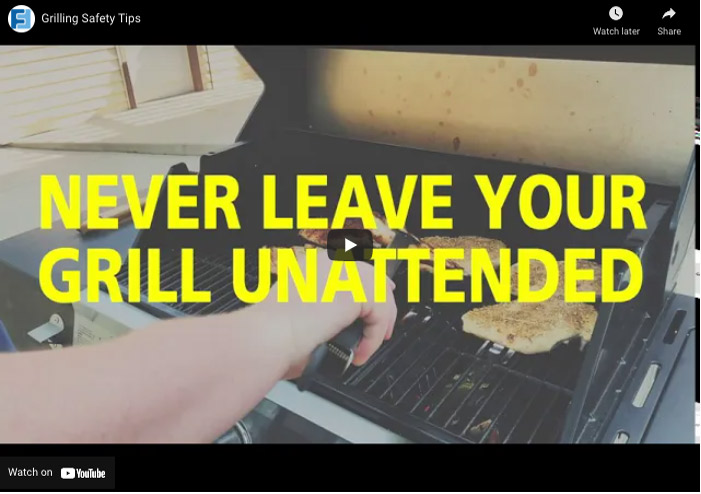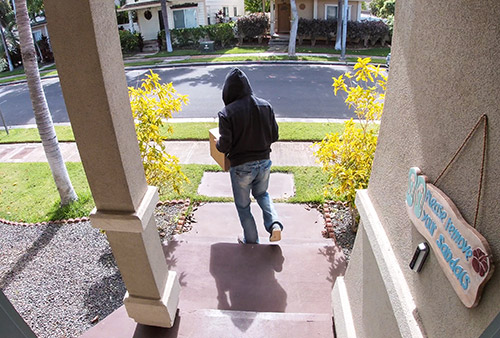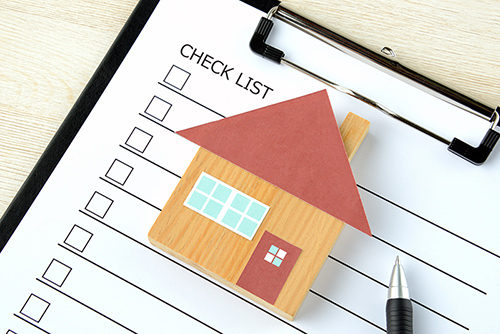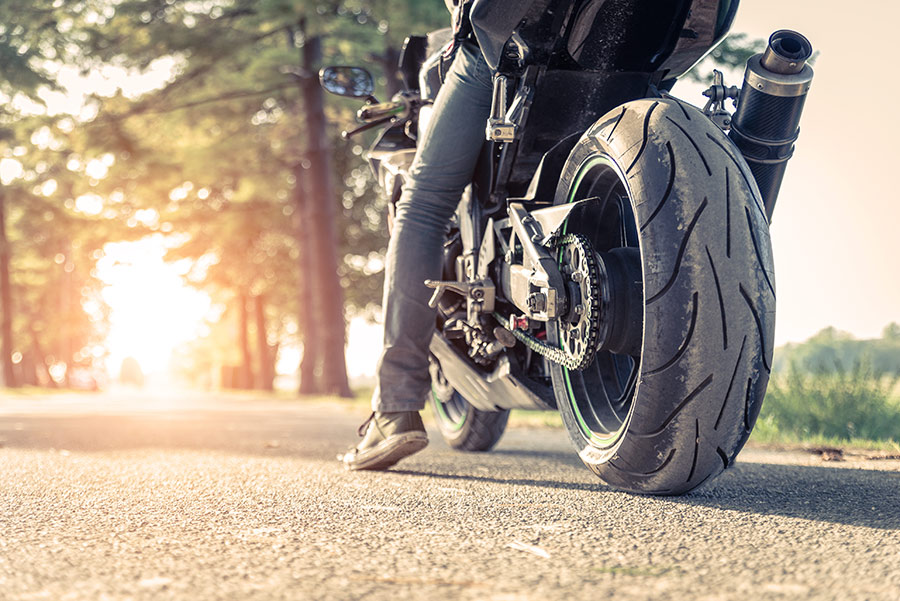Getting ready to grill out? Keep these safety tips in mind before you get started!
Have a safe & relaxing Memorial Day Weekend!

Getting ready to grill out? Keep these safety tips in mind before you get started!
Have a safe & relaxing Memorial Day Weekend!


Tips for protecting your packages from disappearing while you’re out, and how insurance might also help h3
Online shopping has introduced a great convenience for those who don’t have the time or preference for brick and mortar stores, but unfortunately it’s also introduced new risks to consumers. When your packages disappear from your porch before you ever get the chance to claim them, you can end up losing a lot more than money. Package thieves cause unnecessary stress and frustration for homeowners everywhere.
Fortunately there are some easy steps you can take to prevent your deliveries from vanishing. It’s also important to get equipped with the proper homeowners insurance, and an independent insurance agent can help you find the right coverage long before you’d ever need to use it. For starters, check out this guide to preventing porch package theft and how homeowners insurance can help, too.
Package theft is particularly a concern around the holidays and in globally tough times, such as pandemics, because a much larger percentage of folks than usual do their shopping online. However, “porch pirates” have become a threat year-round with the rise in online shopping in general. Check out a few quick package theft stats and see for yourself.
Since package theft is a very real threat, it’s crucial to take action steps ahead of time to protect your deliveries from disappearing. It’s also critical to get set up with the right homeowners insurance for further protection.
Yes, however, it can get a little tricky. First of all, in order to file a successful claim, you’d need to be able to prove your package was actually delivered and then stolen, which can be a challenge. If the package wasn’t actually delivered, the fault would return to the sender. This is why large online retailers like Amazon have started photographing package deliveries, so they can’t be held liable if your package disappears later. If your package was delivered and then stolen, it becomes your responsibility.
What insurance companies refer to as “mysterious disappearance” doesn’t always indicate a theft. If you were able to provide proof of package theft, the issue would then become if the value of the goods you ordered exceeded your insurance policy’s deductible. Renters insurance deductibles can be lower, often between $250-$500, but homeowners insurance deductibles are typically one percent of the total value of your home. Unless what you ordered was really expensive, it’s unlikely to exceed this amount.
So, while it’s good to know that homeowners insurance can provide coverage for stolen packages, it’s also important to understand that you may not actually get your money back if your order wasn’t valuable enough to exceed your deductible. Beyond avoiding the hassle of filing unsuccessful insurance claims, however, it’s best to just prevent porch piracy all around.
When it comes to protecting homeowners against porch pirates and all other perils, no one’s better equipped to help than an independent insurance agent. Independent insurance agents search through multiple carriers to find providers who specialize in home insurance, deliver quotes from a number of different sources, and help you walk through them all to find the best blend of coverage and cost.
Source: trustedchoice.com


If your possessions are stolen or destroyed, your insurance company will ask you to provide a record of them. Learn the benefits of having a personal property inventory list below.
Do you know the brand name and serial number of your stereo? Would you recall off the top of your head when and how much you paid for your digital camera? Without a list in front of you for reference, the details of your valuables may be forgotten – which creates more frustration in an already stressful time, and can cost you money in the long run.
That's why it's important to have a personal property inventory created ahead of time – before an unfortunate incident.
A personal property inventory is a complete list of all your household goods and personal belongings. A complete inventory includes the following information about each item on your inventory list:
No one is fully prepared for a loss, but you can take steps to reduce the stress in the aftermath. A personal property inventory in place before a claim ensures that your claim is filed promptly and completely, which means that you'll get it settled quickly and accurately, and get your life back to normal.
You can also use an inventory to determine if you have adequate coverage for your possessions. Many people find out after a loss that they were not sufficiently covered, and should have purchased higher coverage amounts or replacement cost coverage. A good rule of thumb is to add up how much it would cost to replace your belongings, and then compare it to your policy's personal property limit. This is an indicator of whether or not you need to purchase additional coverage.
It's also a good idea to check the claim settlement methods on your policy. If you've purchased replacement cost coverage, your settlement allows you to buy new items to replace the damaged or stolen ones. If you have actual cash value coverage, you receive what your items are worth at the time of the loss – taking into account depreciation.
Be complete with your inventory. An effective way to do an inventory is to split the area of your house and take one room at a time. Start outside and take views of each side of your house, including the landscaping. Make sure to include all items in a storage shed or garage, like children's bikes and sporting goods.
Move inside the home and cover one room at a time. You might want to start with artwork or wall hangings and then move onto the floor. Remember to include all high-valued items like antiques, collectibles, silverware and jewelry.
Electronics are a key part of any personal property inventory. TVs, stereos, cell phones, ipads and laptops should be included, as well as clothing, furniture and items inside china cabinets and storage bins.
As you videotape each item, it's important that you verbally state when each item was purchased, its value, any special features and the model and serial number. If you choose to photograph these items instead of videotaping them, write all pertinent information on the backs of the pictures.
Once you've completed the inventory, copy everything including paper lists, videotapes, receipts, computer printouts, appraisals and photos. Store one set in a secure place in your home, and store the other off the premises in a safe deposit box or with a friend or relative.
Update your inventory every four to six months to ensure that the information is accurate and reflects all items in the home. Save all the receipts for newly purchased items, and make sure to update your inventory as soon as you make a major purchase and delete the items you no longer have.


Motorcycle riders continue to be overrepresented in fatal traffic crashes. In 2018, 4,985 motorcyclists died. To keep everyone safe, we urge drivers and motorcyclists to share the road and be alert, and we're reminding motorcyclists to make themselves visible, to use DOT-compliant motorcycle helmets, and to always ride sober.
Driving a car and riding a motorcycle require different skills and knowledge. Although motorcycle-licensing regulations vary, all States require a motorcycle license endorsement to supplement your automobile driver's license. To receive the proper endorsement in most States, you'll need to pass written and on-cycle skills tests administered by your State's licensing agency. Some States require you to take a State-sponsored rider education course. Others waive the on-cycle skills test if you've already taken and passed a State-approved course. Either way, completing a motorcycle rider education course is a good way to ensure you have the correct instruction and experience it takes to ride a motorcycle. Contact your state motor vehicle administration to find a motorcycle rider-training course near you.
Of the motorcycle riders involved in fatal crashes in 2018, 28% were riding without valid motorcycle licenses
Given the fact that motorcycles vary in handling and responsiveness, be sure to take the time to get accustomed to the feel of a new or unfamiliar motorcycle by riding it in a controlled area. Once you feel comfortable with your bike, you can take it into traffic. Make sure you know how to handle your motorcycle in a variety of conditions (e.g., inclement weather or encountering hazards such as slick roads, potholes, and road debris).
Check your motorcycle’s tire pressure and tread depth, hand and foot brakes, headlights and signal indicators, and fluid levels before you ride. You should also check under the motorcycle for signs of oil or gas leaks. If you're carrying cargo, you should secure and balance the load on the cycle; and adjust the suspension and tire pressure to accommodate the extra weight. If you're carrying a passenger, he or she should mount the motorcycle only after the engine has started; should sit as far forward as possible, directly behind you; and should keep both feet on the foot rests at all times, even when the motorcycle is stopped. Remind your passenger to keep his or her legs and feet away from the muffler. Tell your passenger to hold on firmly to your waist, hips, or belt; keep movement to a minimum; and lean at the same time and in the same direction as you do. Do not let your passenger dismount the motorcycle until you say it is safe.
1